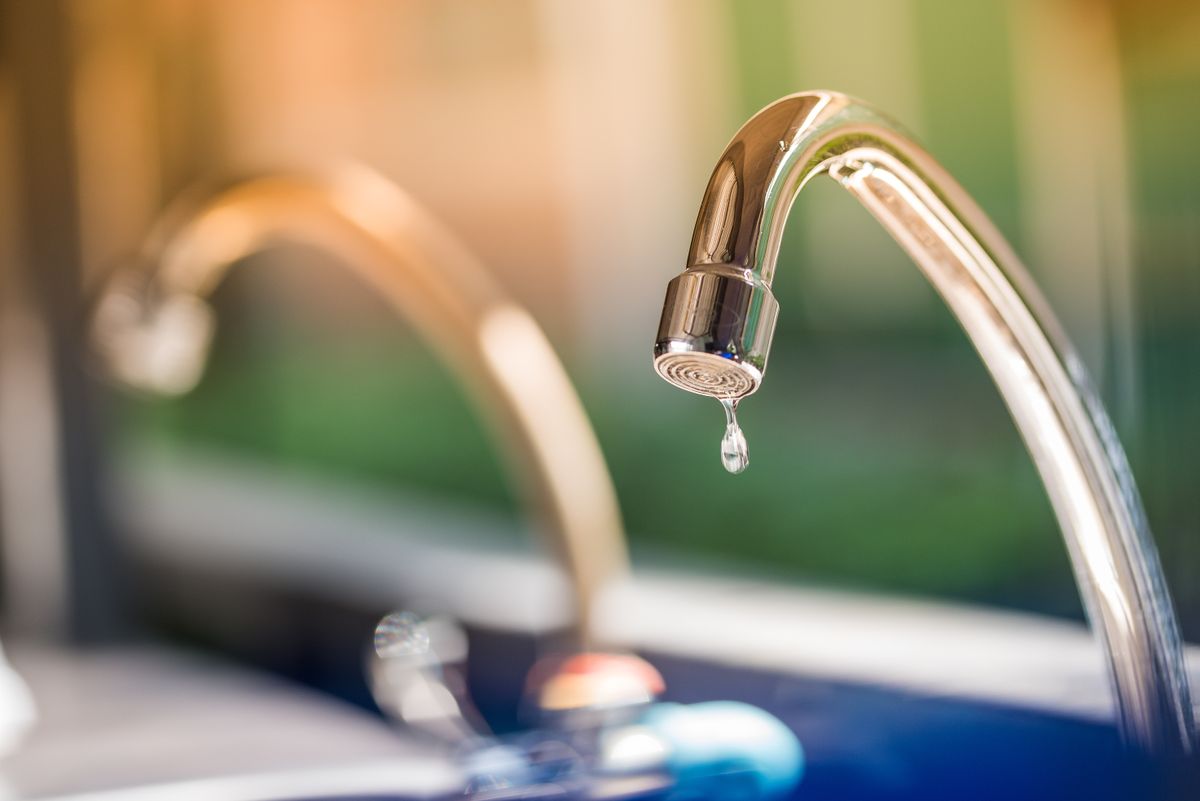Your Factors Behind Repairing a Malfunctioning Faucet
Your Factors Behind Repairing a Malfunctioning Faucet
Blog Article
What're your opinions on What Causes Leaky Faucets & How To Fix Them?

Leaking taps might feel like a minor trouble, yet their effect goes beyond simply the nuisance of the noise. From drainage to incurring unnecessary financial prices and health and wellness risks, neglecting a trickling tap can cause numerous effects. In this write-up, we'll explore why it's critical to address this typical household problem quickly and effectively.
Wastefulness of Water
Environmental Influence
Dripping faucets add considerably to water wastefulness. According to the Environmental Protection Agency (EPA), a single tap dripping at one drip per second can throw away more than 3,000 gallons of water annually. This not just strains water sources yet also impacts ecological communities and wildlife dependent on them.
Step-by-Step Guide to Fixing a Dripping Faucet
Tools Required
Before trying to fix a dripping faucet, collect the essential devices, consisting of a flexible wrench, screwdrivers, replacement parts (such as washers or cartridges), and plumber's tape.
Typical Faucet Issues and Their Solutions
Identify the sort of tap and the particular issue causing the drip. Usual issues include damaged washing machines, corroded shutoff seats, or malfunctioning O-rings. Describe maker instructions or on the internet tutorials for step-by-step support on repair services.
Financial Costs
Enhanced Water Costs
Past the ecological effect, leaking taps can pump up water expenses substantially. The accumulated waste in time equates into higher energy costs, which could have been stayed clear of with prompt repair work.
Prospective Property Damages
In addition, long term dripping can result in damage to fixtures and surfaces surrounding the tap. Water build-up can create discoloration, deterioration, and also architectural concerns if left ignored, causing additional repair service expenses.
Health and wellness Issues
Mold And Mildew and Mildew Growth
The consistent existence of wetness from a trickling faucet produces an optimal atmosphere for mold and mold growth. These fungi not only endanger interior air high quality but also position health and wellness threats, particularly for people with respiratory conditions or allergic reactions.
Waterborne Diseases
Stationary water in leaking taps can become a breeding ground for bacteria and other microorganisms, increasing the danger of waterborne diseases. Contaminants such as Legionella germs flourish in stationary water, possibly resulting in significant illnesses when consumed or breathed in.
DIY vs. Professional Repair service
Advantages and disadvantages of Do It Yourself Repair Service
While some may try to repair a leaking faucet themselves, DIY fixings feature their very own collection of challenges. Without proper understanding and devices, do it yourself efforts can exacerbate the issue or result in incomplete repair services, extending the issue.
Benefits of Employing a Specialist Plumber
Working with an expert plumber makes sure that the underlying root cause of the trickling faucet is resolved successfully. Plumbings have the knowledge and equipment to diagnose and fix faucet issues successfully, conserving time and lessening the risk of further damages.
Environmental Responsibility
Specific Contribution to Preservation
Taking obligation for repairing dripping taps aligns with wider efforts toward water preservation and environmental sustainability. Every person's actions collectively make a substantial impact on protecting precious sources.
Sustainable Living Practices
By prioritizing punctual repairs and embracing water-saving behaviors, individuals contribute to sustainable living methods that profit both present and future generations.
Safety nets
Normal Upkeep Tips
To prevent dripping faucets, carry out routine maintenance such as cleaning aerators, inspecting for leakages, and replacing worn-out components immediately. Additionally, consider setting up water-saving tools or updating to a lot more effective fixtures.
Importance of Prompt Services
Resolving leaking faucets as quickly as they're observed protects against more water waste and possible damage, eventually saving both water and money in the long run.
Influence On Property Worth
Understanding of Well-Maintained Residential Property
Keeping a residential or commercial property in good condition, including resolving upkeep concerns like trickling faucets, boosts its perceived value and desirability among possible purchasers or tenants.
Impact on Resale Value
Qualities with well-kept plumbing components, consisting of taps, command greater resale worths in the real estate market. Attending to leaking faucets can contribute to a positive impact throughout property examinations and arrangements.
Final thought
Dealing with a trickling faucet surpasses mere convenience; it's an important step towards saving water, decreasing monetary costs, and securing health and building. Whether with do it yourself repair work or specialist help, acting to deal with trickling faucets is a small yet impactful means to promote accountable stewardship of resources and contribute to a much healthier, much more lasting future.
How to Fix a Dripping or Leaky Faucet
A leaking faucet is one of the most common problems that homeowners encounter, but it being commonplace doesn’t make it any less annoying. The constant drip drip drip of a leaking bathtub faucet, showerhead, or sink tap can disturb your home’s serenity. Left neglected, a dripping faucet can also result in higher water bills and discoloration or mold growth in your sink or plumbing fixtures.
Fortunately, you don’t have to be a trained plumber to know how to stop a dripping faucet. With some basic tools, replacement parts, and a little patience, leaky faucet repair is a breeze. In this article, we’ll explain what causes dripping faucets and how you can fix them.
What Causes a Leaking Faucet?
Kitchen and bathroom faucets come in all manner of designs, but most involve some combination of valves, O-rings, seals, and washers. The O-ring is usually the weakest link, but any one of these pieces can wear down over time. Heat, moisture, temperature fluctuations, minerals, mold, and movement can contribute to warping and corrosion, breaking the watertight seal. This just comes with the territory of being a homeowner. Everything is always subject to wear and tear, and some component parts of your appliances and fixtures need to be replaced on occasion. At least replacement O-rings are cheap!
More rarely, dripping faucets can be a symptom of excessively high water pressure. Were this the case in your home, you would probably notice that the leak is not isolated to one faucet. Water pressure issues are harder to resolve on your own. We recommend contacting a professional plumber if you suspect your water pressure is too high.
How to Fix a Dripping Faucet
Pipe wrench or monkey wrench Allen wrench set Screwdrivers Old towel or rag Shut off the water.
Before you do anything, you need to turn off the water to keep from drenching your kitchen or bathroom. You should find a valve under the sink and against the wall. Once you’ve turned this valve, try turning the faucet on to confirm that the water source has been cut off.
If you can’t locate your local valve for the faucet you’re working on, you can always shut off the water to the house at the main valve. Of course, this will prohibit anyone from using the sinks, showers, or toilets while you’re working on the faucet that’s giving you trouble.
Plug or block the drain.
You’ll be disassembling the faucet and removing some small bits of hardware. Plug the drain with a stopper or rag to avoid the possibility of a small screw falling into your P-trap.
Take apart the faucet assembly.
There are several varieties of kitchen and bathroom faucets, each with its own manner of assembly. For detailed instructions on how to disassemble your faucet, you can refer to the fixture’s manual or contact the manufacturer. If you know whether you have a ball, disc, cartridge, or compression faucet, you can find detailed schematics online.
In general, you need to begin by removing the faucet handles. You might notice a small screw that you’ll need to remove with a screwdriver or Allen wrench. If you don’t see any visible securing hardware, it’s likely hidden under a decorative cap that can be unscrewed or popped off with flathead screwdriver.
Remove each piece methodically, consulting a schematic when necessary. Take notes or arrange the pieces in such a way to make it easier to correctly reassemble the faucet later.
Remove the cartridge.
Once you’ve removed the handles and securing hardware, you should be able to remove the valve cartridge or stem. Some cartridges will slide right out. Other faucet models will require you to loosen a nut with a pipe wrench before you can remove the valve stem.
Examine the exposed hardware.
With the cartridge or stem removed, inspect the component parts. Check the rubber O-rings for wear and tear. Also examine the seat washer for corrosion or other damage. These pieces are usually the responsible parties for a dripping faucet, but it’s worth inspecting the other component parts while you have the faucet disassembled.
Find replacement parts.
Once you’ve identified which faucet component has failed, find an identical replacement. Your local hardware store should have O-rings, seat washers, and other standard components in stock. If you have a luxury or uncommon faucet, you may have to contact the manufacturer for a replacement part.
It’s a good idea to take your old parts with you to the hardware store so you can compare them with the store’s inventory and be sure you’re purchasing the correct replacement.
Reassemble the faucet.
With your new parts in hand, reconstruct the faucet and handles. Don’t be tempted to overtighten screws or nuts. You might think this could create a better seal, but it can instead damage or bend a delicate part of the assembly and create a new problem for you.
Turn on the water and test the faucet.
The only thing left to do is test your work. Unplug the sink, turn the water back on, and try the faucet. Congratulate yourself on a job well done!
https://www.libertyhomeguard.com/how-to-fix-a-dripping-or-leaky-faucet/

I was introduced to that write-up about What Causes Leaky Faucets & How To Fix Them from a friend on another web blog. Do you know about somebody who is truly interested in the niche? Why not promote it. I praise you for being here. Come back soon.
Report this page